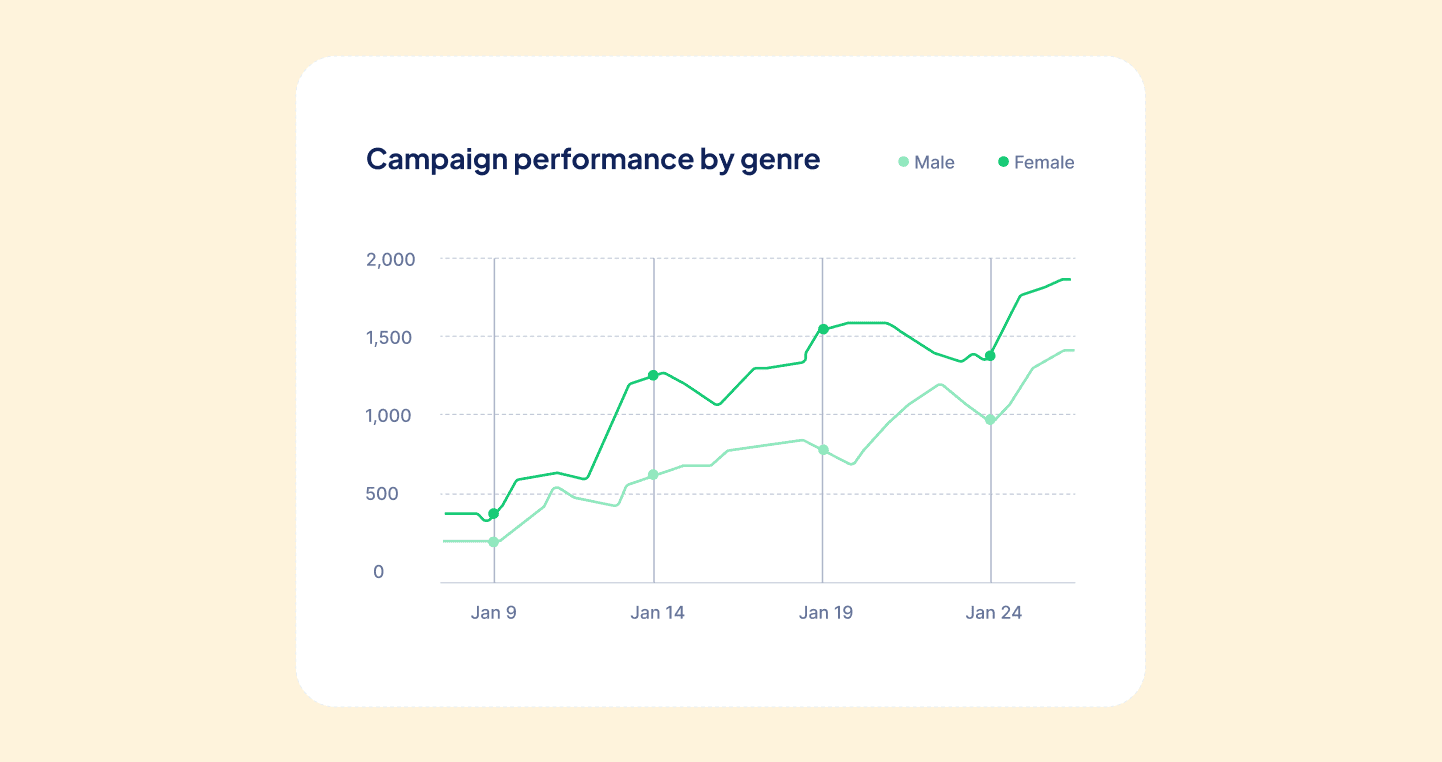This is a guest post by Sarah Calvert.
Substance use disorders (SUDs) impact both the physical and the relational aspects of oneself, so it’s not surprising that sexual problems are common—both during SUD and as you begin recovery.
The impact of SUDs on the sexual self
Our sexual selves do not function in isolation. Our physicality—the emotional, relational and cultural parts of ourselves—all interact with each other. They impact how we are in our relationships and in our sexual connection, with others and with ourselves.
It’s well understood that SUDs physically affect our bodies with a number of short and long-term consequences that can be devastating and frightening. This realisation often happens before or early on in the recovery period when there is usually already quite a lot to cope with. You may be feeling many different emotions, processing a lot of thoughts and feelings, and dealing with some stark realities (often the worrying consequences of an SUD, such as employment, relationship or financial issues). It can be a daunting and overwhelming time. Beginning to reconnect with the body and realising that physically, our bodies might not be working or responding in a way that we were used to before SUD is a tough challenge to face.
The relationship between SUDs and sex
SUDs more often than not impact our organs, brain, and nerves. Commonly, one of the distressing ramifications of SUD is sexual dysfunction. This is often hidden away,not to be spoken of—because, like SUD, sexual problems often come with a sense of shame, and therefore remain in the shadows. As a result, this often manifests itself initially as relationship problems.
A history of sexual trauma or abuse can be an issue underlying the SUD. According to one report*, over 70 percent of women who enter SUD treatment programmes have histories of sexual abuse. It’s important to remember that sexual abuse is not just an issue affecting women. Many men have also suffered this trauma; it’s an issue regardless of gender. And it’s not uncommon for further sexual abuse to be experienced as adults whilst under the influence of substances. As we know, when addressing SUDs, a large component is about addressing the underlying issues—and this may well include historic traumas, perhaps sexual traumas.
Research shows that with SUDs, sexual thoughts, feelings, and behaviours often become intrinsically linked with the experience of abusing substances, which can lead to fear that sober sex may be dull or less satisfying. Whilst alcohol and drugs like cocaine can have the effect of initially increasing libido, it is a short-lived affair because prolonged use of alcohol can cause damage to the penile nerves and reduce testosterone, which in turn impacts sexual desire. SUDs can also be associated with erectile dysfunction, a diminished sperm quantity and quality, and can lead to other sexual problems such as delayed ejaculation, lack of orgasm, and painful sex (dyspareunia), which can be the result of dehydration and lack of natural lubrication.
While this all sounds quite worrying, my aim is not to alarm. By sharing and normalising this information, we can prevent people from being left in a state of not knowing what is happening to their bodies. Being aware of what is happening, understanding the potential reasons, and knowing that it is not uncommon for those experiencing SUDs and in recovery brings a sense of relief. One of my favourite quotes from Israelmore Ayivor sums up the relationship between information and transformation perfectly:
“Information and ignorance are like light and darkness. When light comes into your room, darkness must fly away. When information rules your mind, ignorance finds its way out.”
With consciousness and awareness, there is freedom; we are then able to make choices and find a way to move forward.
Understanding the origin of sexual dysfunctions
When sexual issues or dysfunctions arise, it’s important to understand the origin of the problem. Is it organic due to physical issues, or inorganic (i.e. psychogenic)? If your issue is physiological, there are medical treatments available that can help, and it’s always good to speak with your doctor about the different options available.
Inorganic or psychogenic factors can include relationship issues(which are common in situations where alcohol or drugs are a factor) or issues of sexual shame, which may, for example, be connected with sexual preferences that do not conform to the heterosexual norm.
As you identify issues, ask yourself: Has this always been the case, or has this issue developed later in life, perhaps as a result of SUD? Or is it situational? For example, can I get an erection when I masturbate, but not when I’m having sex with another.
Thinking about sexual problems in this way can help to provide an indication of what kind of therapy would be the most beneficial. It’s important to appreciate that you are a holistic being, and your physical and emotional selves are on this journey together.
Moving into recovery, it is not uncommon for sexual dysfunction to continue. This makes sense if we think about the journey of recovery and what is happening to our bodies within that healing process: physical, emotional, and psychological recovery—there’s a lot going on! The sexual journey will also take time; patience and self-kindness are as much a part of this journey as focus, will, and determination.
Getting to know your body in recovery
Sober sex opens us up to vulnerability and often leads to concerns over arousal, performance, and a common fear that sex may not be as much fun as it once was. You may not know who you are sexually when sober, so I often invite people to think about their sexual self with substances—the qualities and components that come to mind—and then about their sober sexual self. This exercise helps people to explore the differences so they can better understand and confront fears, deep-seated beliefs, and shame, as well as gain clarity around the kind of sex you’d really like to be having. Sober sex opens up all kinds of potential, and can be lots of fun!
I find thinking of sex as an extension of communication helpful: it is communication with oneself and with another. SUDs shut down this communication. In essence, SUDs shut off connection... and sex is all about connection, whether this is sex with another or sex with ourselves.
One of the major problems that I see in my practice is a lack of connection or communication with our bodies. Most people have lost touch with their bodies, spending the majority of their lives in their heads. We need to retrain our bodies, switch them back on, and re-connect.
Emerging from the fog of SUD, you may well be starting to experience the sensations of touch again after a period of being numbed out. It’s important to discover what you like and what you don’t—rediscovery is what it’s all about.
Take your time with this; reconnecting to your body may also bring up suppressed or repressed feelings, for you to process. It’s really important that you go at your own pace, be kind to yourself, and ensure that you’ve got the support you need. The next step is to be able to communicate to your partner what you like and what you don’t.
You may find that your sexual preferences change as you go further into your recovery process; this is not unique to those experiencing SUDs or those in recovery. As sexual beings, our preferences are not static. The kinds of sex we enjoy—and the frequency, for example—changes as we do throughout our lives. We are fluid; we develop and change, and so will our sexual selves.
Reconnecting with your genitals
I find functional sex therapy techniques are useful to help get you out of the head and into the body, as are mindfulness and body-scan meditations. During sex, ask yourself: What are the sensations in your penis or in your vulva or vagina right now? Getting reacquainted with your genitals is crucial on this journey.
There are a lot of people out there that are not connected with their genitals (regardless of whether they have experienced an SUD or not); it’s pretty commonplace these days. When I ask people in my clinic how their penis or vagina feels, often, they haven’t got a clue. Many of us in the western world have become walking heads, completely out of touch with our bodies. Think about your relationship to your genitals: how do you feel about them?... Can you feel them?!
Now, let’s talk about arousal. There are two pathways to arousal: the brain and the body. If sexual conditioning becomes accustomed to stimulus only through the brain, our body can become shut off, resulting in sexual dysfunction. We can reprogramme our bodies and re-enliven our arousal pathways by feeling into sensations, rather than going into the mind and getting lost in thoughts (which cause us to disconnect from our bodies and can lead to anxiety). Notice what it feels like and sink into the feelings of touch.
Establishing a healthy sex life
What are the qualities that you consider to be a part of a healthy sex life? Does your vision of a healthy sex life feature any of the following attributes, for example: playful, fun, nurturing, erotic, safe, consenting, intimate, vulnerable? When you think of your sexual life, how do these qualities fit in? This isn’t an exhaustive list, as we are all unique beings with varying sexual appetites and sexual preferences. But it may be a helpful starting point.
When you ask yourself these questions, consider The Harvey Institute’s Core Principles of Sexual Health.
- Consent: “Sexual health requires sex to be consensual. Consent means ‘voluntary cooperation’ and communicates permission to try and reach sexual satisfaction and intimacy with willing partners.”
- Non-Exploitation: “Sexual health requires sex to be non-exploitative. Exploitation is when a person leverages their power and control to receive sexual gratification.”
- Honesty: “Sexual health requires open and direct communication with oneself and every sexual partner. Honesty with oneself involves being open to sexual pleasure, sexual experience, and sexual education.”
- Shared Values: “Throughout the lifespan, sexual values play an important role in motivations for sex... Values are a source of identifying one’s sexual standards and ethics.”
- Protection from STI, HIV, and Unwanted Pregnancy: “This sexual health principle addresses the need for anyone engaged in sexual activity to implement a contraception plan, prevent acquiring a sexually transmitted infection and take precautions to prevent transmission of HIV.”
- Pleasure: “Pleasure is a primary motivation for solo-sexual activity (masturbation) and partnered sex...sexual health is the art of balancing one’s sexual safety and responsibility with the lifelong curiosity of pleasure, exploring sexual interests and remaining curious about the ever-changing sources of sexual pleasure. ”
These principles provide a good and inclusive guide to healthy sexual experiences, which may also be a useful resource as you navigate, explore, and develop your newfound sexual self.
As you begin your journey to reconnecting with your sexual self, there are a few practical steps to keep front of mind. Research tells us that it is quite common for therapists working with SUDs not to offer their clients the opportunity to look at the sexual selves; in fact, it can be actively discouraged. There are, however, therapists out there that work in a holistic, sex-positive way—which includes exploring your sexual self.
Part of this process is adopting a healthy lifestyle, one that considers exercise, diet, sleep, and practising self-compassion. Use mindfulness to reconnect with the body and emotional self. Be curious about the way your body is, the way it feels, and the way it responds. Stay out of judgement and try to get away from that inner critic—it’s counterproductive and closes us down. Curiosity helps us to open up and explore; it serves to assist growth.
My last piece of advice? Pelvic floor exercises. Don’t be fooled into thinking these are only for women post-partum—if you think that, you’re missing a trick! The benefits include reconnecting with your body and getting the blood flowing to the vagina and penis (which helps with desire, arousal, and recognising our sexual arousal). Pelvic floor exercises also help with toning the muscles in this area, which strengthens orgasms (YES! That’s right, they strengthen orgasms in both men and women!), and they also help with incontinence. These are amazing for everyone, and I recommend them to nearly all of my clients! You may want to check this out with your doctor to make sure there aren’t any contradictions for you.
In closing, I would like to say that recovery can be a difficult and arduous journey, and also an amazing opportunity to connect, blossom, and reach your true potential. Do yourself a favour and make sure that your sexual self also gets a piece of the action!
Sources
*Ouimette PC, Kimerling R, Shaw J, Moos RH. Physical and sexual abuse amount women and men with substances use disorders. Alscam Treat. Quart 2000.
Emphasize your product's unique features or benefits to differentiate it from competitors
In nec dictum adipiscing pharetra enim etiam scelerisque dolor purus ipsum egestas cursus vulputate arcu egestas ut eu sed mollis consectetur mattis pharetra curabitur et maecenas in mattis fames consectetur ipsum quis risus mauris aliquam ornare nisl purus at ipsum nulla accumsan consectetur vestibulum suspendisse aliquam condimentum scelerisque lacinia pellentesque vestibulum condimentum turpis ligula pharetra dictum sapien facilisis sapien at sagittis et cursus congue.
- Pharetra curabitur et maecenas in mattis fames consectetur ipsum quis risus.
- Justo urna nisi auctor consequat consectetur dolor lectus blandit.
- Eget egestas volutpat lacinia vestibulum vitae mattis hendrerit.
- Ornare elit odio tellus orci bibendum dictum id sem congue enim amet diam.
Incorporate statistics or specific numbers to highlight the effectiveness or popularity of your offering
Convallis pellentesque ullamcorper sapien sed tristique fermentum proin amet quam tincidunt feugiat vitae neque quisque odio ut pellentesque ac mauris eget lectus. Pretium arcu turpis lacus sapien sit at eu sapien duis magna nunc nibh nam non ut nibh ultrices ultrices elementum egestas enim nisl sed cursus pellentesque sit dignissim enim euismod sit et convallis sed pelis viverra quam at nisl sit pharetra enim nisl nec vestibulum posuere in volutpat sed blandit neque risus.

Use time-sensitive language to encourage immediate action, such as "Limited Time Offer
Feugiat vitae neque quisque odio ut pellentesque ac mauris eget lectus. Pretium arcu turpis lacus sapien sit at eu sapien duis magna nunc nibh nam non ut nibh ultrices ultrices elementum egestas enim nisl sed cursus pellentesque sit dignissim enim euismod sit et convallis sed pelis viverra quam at nisl sit pharetra enim nisl nec vestibulum posuere in volutpat sed blandit neque risus.
- Pharetra curabitur et maecenas in mattis fames consectetur ipsum quis risus.
- Justo urna nisi auctor consequat consectetur dolor lectus blandit.
- Eget egestas volutpat lacinia vestibulum vitae mattis hendrerit.
- Ornare elit odio tellus orci bibendum dictum id sem congue enim amet diam.
Address customer pain points directly by showing how your product solves their problems
Feugiat vitae neque quisque odio ut pellentesque ac mauris eget lectus. Pretium arcu turpis lacus sapien sit at eu sapien duis magna nunc nibh nam non ut nibh ultrices ultrices elementum egestas enim nisl sed cursus pellentesque sit dignissim enim euismod sit et convallis sed pelis viverra quam at nisl sit pharetra enim nisl nec vestibulum posuere in volutpat sed blandit neque risus.
Vel etiam vel amet aenean eget in habitasse nunc duis tellus sem turpis risus aliquam ac volutpat tellus eu faucibus ullamcorper.
Tailor titles to your ideal customer segment using phrases like "Designed for Busy Professionals
Sed pretium id nibh id sit felis vitae volutpat volutpat adipiscing at sodales neque lectus mi phasellus commodo at elit suspendisse ornare faucibus lectus purus viverra in nec aliquet commodo et sed sed nisi tempor mi pellentesque arcu viverra pretium duis enim vulputate dignissim etiam ultrices vitae neque urna proin nibh diam turpis augue lacus.
%202.svg)

.png)
